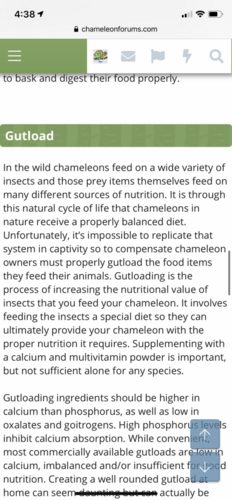PetNcs
Chameleon Enthusiast
You are falsifuing facts.Unfortunately we cannot. The industry standard term is “gutloading”. It is what everyone knows and even though some people do not have enough familiarity with it. We can’t just decide one day to change the term used and expect that to change across the board in reptile keeping. Chameleon Forums is not the only one using that term. And “high quality feeders” to me means they are inherently higher quality, not that we are making them so. So I can see where there would be confusion there on the part of the general populace.
Gutloading and feeding are different things
We have NOT said HIGH WUAKITY FEEDERS
OH MY GOODNESS CAN YOUNPLEASE PLEASE READ ATMLEATS WITH ATTENTION?
We defined
GUTLOADING (as a orocess of.... )
And
HIGH QUALITY FEEDING OF FEEDERS (as a process...)







